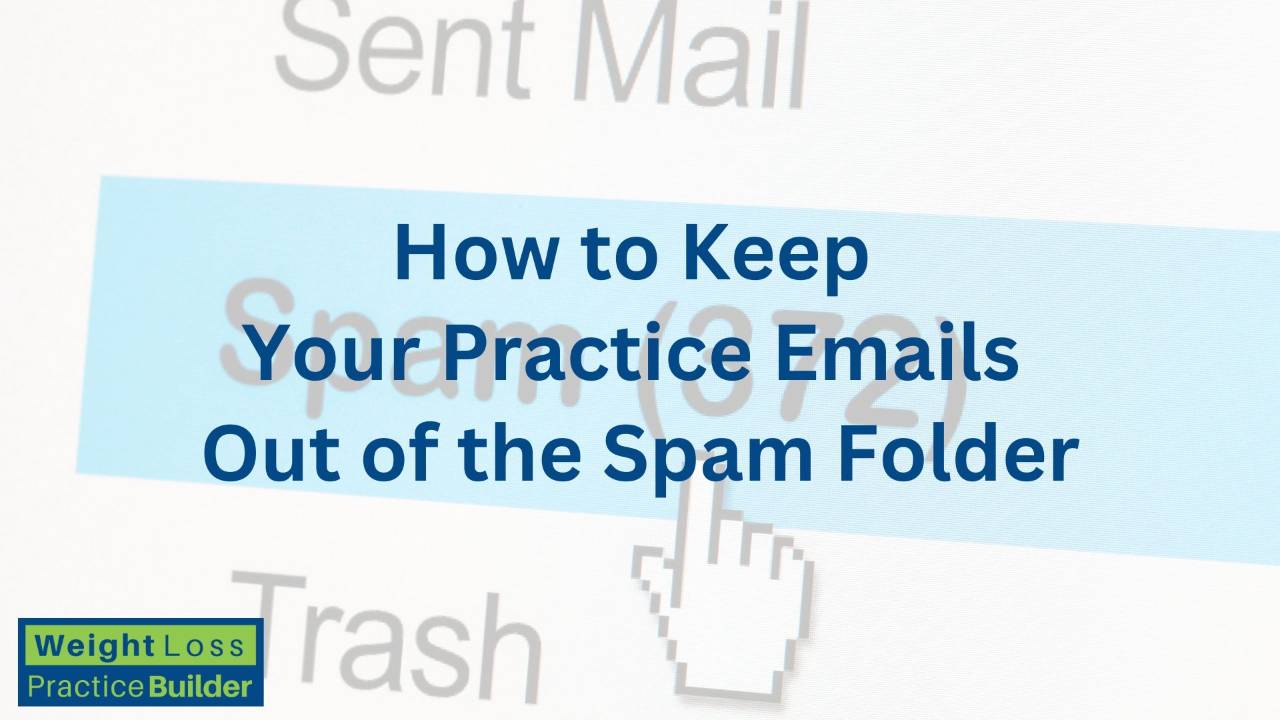
How to Keep Your Practice Emails Out of the Spam Folder
Apr 08, 2025And in front of the people who need them.
You’ve realize that emails can be a great way to keep current patients engaged and prospective patients deciding to use you and your products/services for weight loss. You and your team have spent time crafting the perfect newsletter — it’s helpful, relevant, and even has a compelling call to action. But then... crickets. Why does this happen?
Chances are, your email might be sitting in your subscribers’ spam or promotions folder, never to be seen again.
In today’s digital landscape, staying out of the spam folder isn’t just a nice-to-have — it’s essential. Whether you’re promoting your latest weight loss program, educating patients with tips they can trust, or showcasing a new service, your email needs to actually land in the inbox to do its job.
Why Emails End Up in Spam Folders
Spam filters have come a long way — and for good reason. With inboxes overflowing, email providers are cracking down on anything that even smells like spam.
Here are some of the most common reasons your emails might get flagged:
- You’re emailing people who didn’t opt in.
Buying email lists or adding people without their permission is a fast track to the junk folder — and potential legal trouble under regulations like CAN-SPAM or GDPR.
- Your subject line raises red flags.
Excessive exclamation marks, all-caps words, or phrases like “FREE!!!” and “LOSE WEIGHT FAST” are red flags for filters. They scream “salesy” — and spam filters are listening.
- You’re using too many links or images.
More isn’t better. Overloading your email with clickable links or graphics can trigger spam filters. If it looks more like an ad than a helpful message, it’s more likely to be filtered.
- Your email format is too flashy.
You may love that bold design with five images and animated buttons, but inbox algorithms may not. The current trend is simplicity — think clean layout, clear copy, and fewer distractions.
- Your sender info is missing or confusing.
Using a no-reply address or failing to clearly identify who the email is from (your practice, your provider, your brand) reduces trust — and gets flagged more often.
- Your email engagement is low.
+If your open and click rates are consistently low, providers may start filtering your emails as irrelevant — even for subscribers who haven’t manually unsubscribed.
What’s Changed in Email Marketing (And What You Should Do Differently Now)
Not too long ago, marketers could get away with graphics-heavy emails filled with buttons, banners, and three different calls to action. Not anymore.
Here’s how the rules of email engagement have shifted — and how to adapt:
- Less is More
Design your emails with simplicity in mind. Think of your email like a short, friendly note to a patient or colleague — not a busy flyer.
Use:
- One image, max
- One clear call to action
- Brief copy (250–500 words)
- White space that’s easy on the eyes
- One Goal Per Email
Instead of trying to promote three different things in one email, stick to a single focus: a tip, a patient story, a special offer, or a blog post you want them to read.
- Fewer Links for More Trust
Aim for no more than 1–3 clickable links per email. Too many can be seen as spammy and reduce your click-through rate anyway.
- Use Plain Text When Possible
Plain text or “lightly formatted” emails (clean headers, minimal styling) tend to perform better — and they feel more personal, like a message from a friend.
Just when you think you have it figured out, the rules seem to change. Keeping up with the latest recommendations and best practices is critical to long-term success.
If I can help in any way, please reach out to me at [email protected] or gain access to many free resources at https://www.weightlosspracticebuilder.com/free
Stay connected with news and updates!
Join our mailing list to receive the latest news and updates from our team.
Don't worry, your information will not be shared.
We hate SPAM. We will never sell your information, for any reason.

